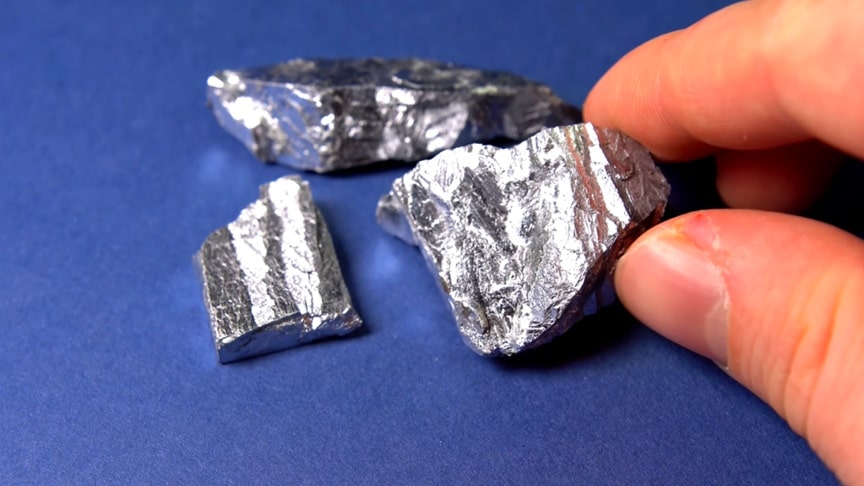Lutetium is the last element in the lanthanide series of rare-earth metals we have become quite familiar with, and that is why it has some unique properties. The elements belonging to this series are arranged in a specific order, in accordance with which, the atomic radius of elements decreases from left to right. Lutetium has got the smallest atomic radius which is why it’s got the highest density, hardness and melting point among all the lanthanides. This property is called lanthanide contraction because of the increase in the number of f orbitals from left to right.
source/image: Thoisoi2 – Chemical Experiments!
Anyway let’s not talk about the boring stuff anymore and let us take a look at the metallic lutetium, which when pure, looks exactly like other lanthanides such as erbium or terbium. By the way this element was discovered by three different scientists from different countries but this element was named by a French chemist. As was customary back then, he named it after his home city – Paris. He named it after its Latin name which is Lutetia.
Chemical properties of lutetium are very similar to those of other lanthanide metals, that is why it is very hard to separate it from ytterbium. That is the very reason why its market price is so high roughly 10 dollars for 1 gram, which makes it just 4 times less expensive gold. It’s okay if you don’t know chemical properties of rare-earth metals because they are all very similar with the only exception of europium. Lutetium dissolves well in acids forming chloride of this metal.
Advertisement
In contrast to other coloured lanthanide compounds, lutetium compounds are colourless that is why this metal was discovered only in 1907. Actually you might be surprised to learn that lutetium can be ground against a grinding wheel and it can form bright sparkles from bits of this metal, which burn up beautifully forming lutetium chloride. Speaking of this metal’s applications, pure lutetium is added to chromium alloys to increase their density. Lutetium is also added to alloys of iron and aluminium to produce strong magnets used in aerospace engineering.











